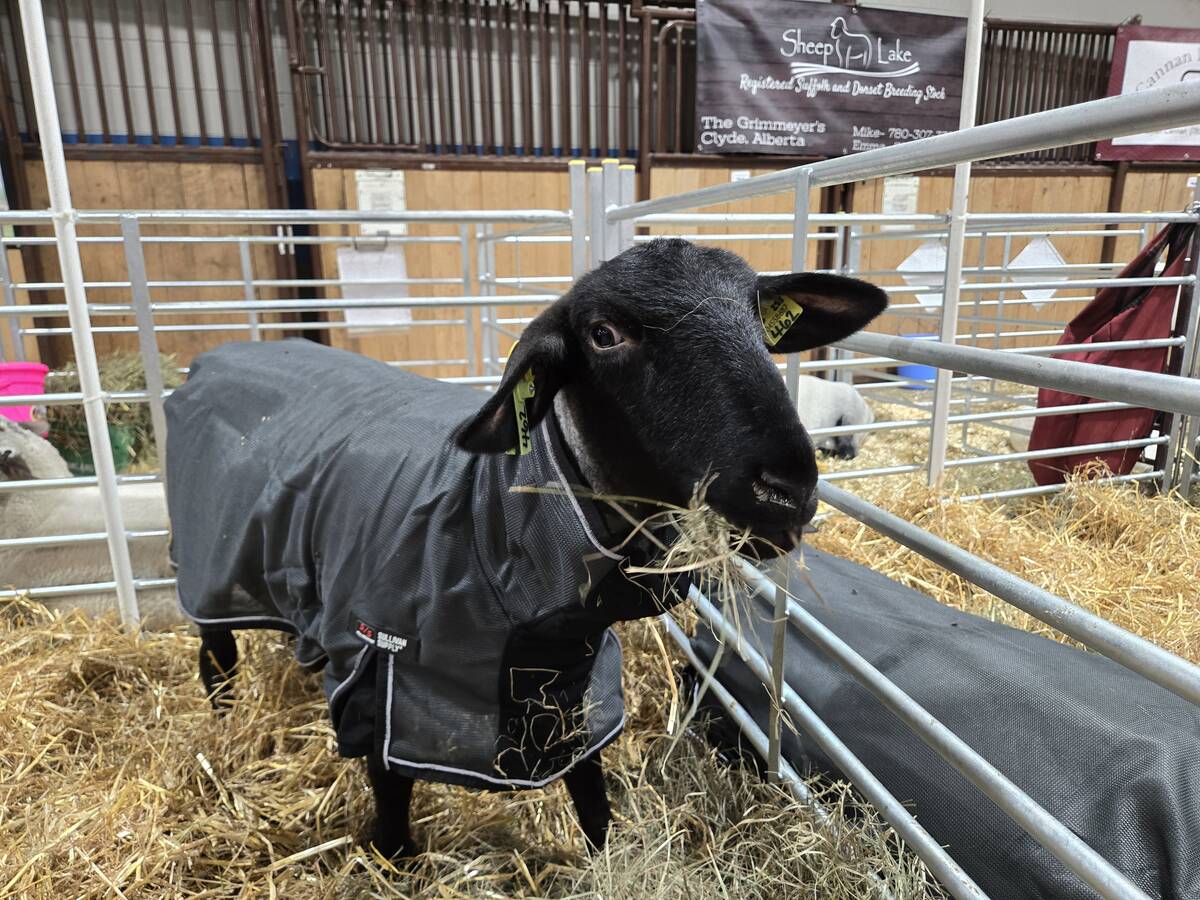Glacier FarmMedia – The Canadian sheep industry is modernizing its approach to animal health management.
The sector is developing advanced traceability systems and addressing ongoing challenges in accessing veterinary drugs and treatments.
Among the key changes is the ongoing transition of the national sheep traceability program from the Canadian Cattle Identification Agency to the Canadian Sheep Federation.
Read Also

Canada’s slaughter horse industry lacks transparency
The lack of clear reporting and public access to data keeps the industry largely hidden, leaving questions about humane treatment and traceability unanswered.
The federation applied to the Canadian Food Inspection Agency to become the responsible administrator in 2023, and in June 2025 received notification that CFIA was comfortable moving ahead with the transition, said Corlena Patterson, executive director of the federation.
“It requires first a legal agreement in place between the Canadian Sheep Federation and the CFIA,” Patterson said.
“So, we’re already in the midst of negotiating that legal agreement, and then it will require that CFIA audits our new trace AgroLedger technology.”
Patterson hopes the agreement will be completed by October, though she thinks it could take as long as December.
The federation has been developing its AgroLedger trace system since 2019, with a goal that goes beyond simply meeting regulatory requirements by creating a system that’s easy to use.
“It helps support producer compliance, but it also has added functionality that gives back to producers,” Patterson said.
The new system includes advanced disease response capabilities that could prove crucial if Canada faces a foot-and-mouth disease outbreak. The federation was also part of Canada’s vaccine strategy working group and helped develop the integrated response plan for FMD.
“Currently, as of the beginning of June, with our AgroLedger trace system, you could already query an animal and within 30 seconds or less tell which animals have been in primary or secondary contact with a diseased animal,” Patterson said.
The system can also identify vaccinated animals if an FMD vaccination strategy is enacted and includes analytics that can query at-risk animal premises and vehicles for an FMD response in less than a minute.
The sheep industry continues to face significant challenges accessing veterinary drugs, vaccines and treatments, an issue that has spread beyond small ruminants to affect all livestock sectors, Patterson said.
“In the past four to five years, that’s actually widespread across all livestock sectors,” she said.
A white paper published in August 2024 by 16 major agricultural organizations, including the Canadian Sheep Federation, said the number of licensed veterinary medicines sold in Canada decreased by 40 per cent between 2017 and 2022.
The Canadian Animal Health Institute data cited in the white paper shows only about one-third of veterinary products remain on the Canadian market compared to a decade ago across all species.
The white paper, called Improving Access to Veterinary Pharmaceuticals, Veterinary Health Products, Livestock Feeds and Veterinary Biologics in Canada, identifies several barriers, including limited return on investment for companies, high regulatory fees and regulatory barriers.
“The issue really is dollars by the pharmaceutical companies … so dollars in terms of the cost of getting a product approved in Canada, the length of time it takes to get it approved, the cost of maintaining that product’s approval in the Canadian industry,” Patterson said.
National livestock groups have been working with government agencies on the issue for about three years. The white paper recommends solutions including mutual recognition of approved drugs from other jurisdictions and multilateral reviews of new products.
Patterson pointed to the successful approval of Metacam, an analgesic for sheep, through a collaborative review process between Canada, Australia and New Zealand as a model for future approvals.
“Canada, Australia and New Zealand governments got together. They split up the review package between the three countries to speed up the review of the applications and fast track it,” she said.
“The only challenge was each country charged the full price.”
While much attention in livestock sustainability focuses on grazing patterns and methane reduction, Patterson said the industry is emphasizing an often-overlooked factor: animal health.
“Twenty per cent of the world’s animal protein is lost to animal disease every year,” she said.
“Lost animals, animals that suffer from disease and/or die from a disease have decreased productivity with larger carbon footprints, especially in terms of methane emissions.”
The federation’s trace system is designed to help identify disease hotspots and support industry education on production-limiting diseases.
Patterson cited Cache Valley virus as an example, noting increased instances in spring lambings this year following last year’s prolonged mosquito season.


















